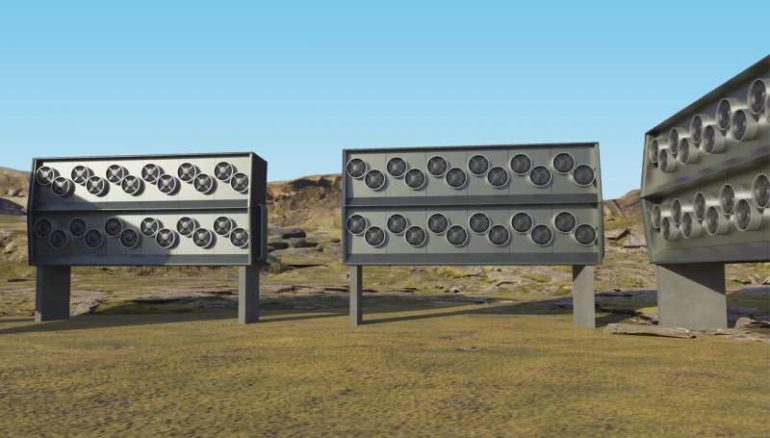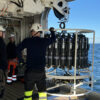The ultimate target of many environmental interventions is to drastically reduce CO2 emissions and minimize its presence in the air. One tool that could help to achieve this goal is direct air capture (DAC) technology, which directly filters CO2 from the air, often via an adsorption-desorption process. While DAC technology is fairly promising, its high energy and material demands can lead to indirect greenhouse emissions and other undesired effects.
Researchers at RWTH Aachen University’s Institute for Technical Thermodynamics have recently carried out a study aimed at assessing the life-cycle of two commercial DAC plants operated by Climeworks, a Swiss company that specializes in CO2 capture technology. Their paper, published in Nature Energy, shows that while air capture systems can be highly advantageous, their benefits often depend on the source of energy used to power them.
“At the Gordon conference on Carbon Capture, Utilization and Storage (CCUS) in 2017, we started a discussion with Climeworks and other companies working on DAC,” André Bardow, one of the researchers who carried out the study, told TechXplore. “While DAC is motivated by achieving climate benefits, the trade-offs with other CO2 emissions and other environmental impacts along the life cycle were not known. Our study now determines these trade-offs based on the first industrial plants.”
The data analyzed by Bardow and his colleague Sarah Deutz, provided by Climeworks and some of its partners, was measured at two DAC plants in Hinwil (Switzerland) and Hellisheiði (Iceland). The researchers used this data to model the full life-cycle of both these plants and of a wide range of adsorbent materials that the DAC technology could use to capture CO2. Subsequently, they carried out a life-cycle assessment to determine the benefits of industrial DAC technologies and their potential environmental impact.
“Our study shows that the first DAC installations in Hinwil and Hellisheidi can already achieve very high carbon capture efficiencies of 85.4% and 93.1%, respectively,” Bardow said. “Their key requirement is energy with a low carbon footprint. Moreover, while DAC leads to other environmental impacts, the increase was shown not to be excessive.”
The researchers found that when DAC technologies use low-carbon energy, like at the DAC plant in Hellisheiði, the choice of absorbent materials and how the plant is constructed become of vital importance to ensure minimum trade-offs between their benefits and shortcomings. For instance, due to how they are designed and based on the materials they use to capture CO2, the plants in Hinwil and Hellisheiði lead to the emission of up to 45 g and 15 g of CO2 per kg of CO2 captured, respectively.
Overall, the study carried out by Bardow and Deutz demonstrates the possible benefits of implementing DAC technology on a large scale, while also highlighting its reliance on low-carbon energy sources. Moreover, it shows that the use of the technology to capture 1% of the CO2 produced in the world per year would not be hindered or affected by material requirements or by energy availability. Nonetheless, the researchers found that in order to successfully implement the technology on this large-scale, companies would first need to significantly scale up the production of the adsorbents it employs. Moreover, if DAC plants were powered by wind energy, other environmental impacts would increase by less than 0.057% and no more than 0.3% using grid electricity by 2050.
“In our next studies, we want to clarify the potential role and the steps for the rollout of DAC as part of the technology portfolio for climate-change mitigation,” Bardow concluded.
Graphene filter makes carbon capture more efficient and cheaper
More information:
Sarah Deutz et al. Life-cycle assessment of an industrial direct air capture process based on temperature–vacuum swing adsorption, Nature Energy (2021). DOI: 10.1038/s41560-020-00771-9
2021 Science X Network
Citation:
Researchers assess the life-cycle of industrial air capture plants operated by Climeworks (2021, March 11)
retrieved 11 March 2021
from https://techxplore.com/news/2021-03-life-cycle-industrial-air-capture-climeworks.html
This document is subject to copyright. Apart from any fair dealing for the purpose of private study or research, no
part may be reproduced without the written permission. The content is provided for information purposes only.



